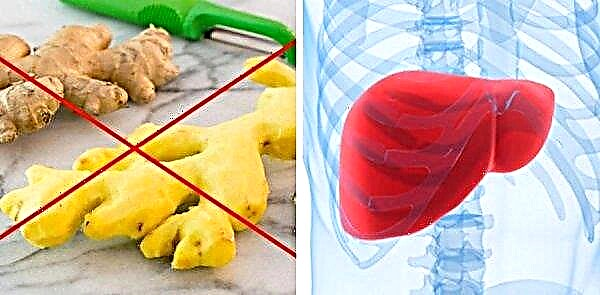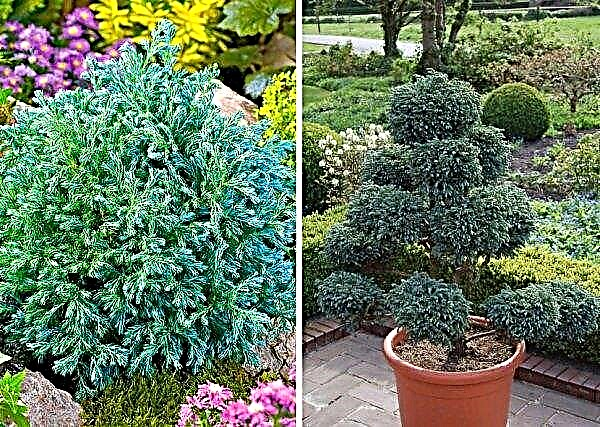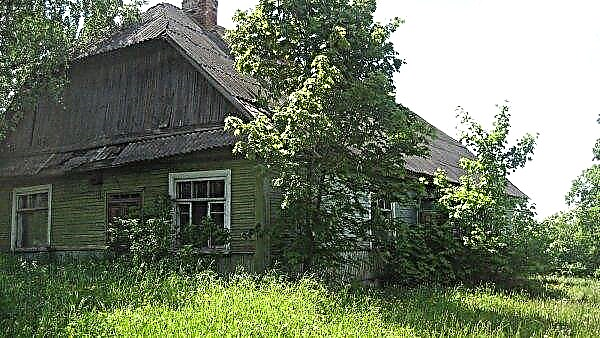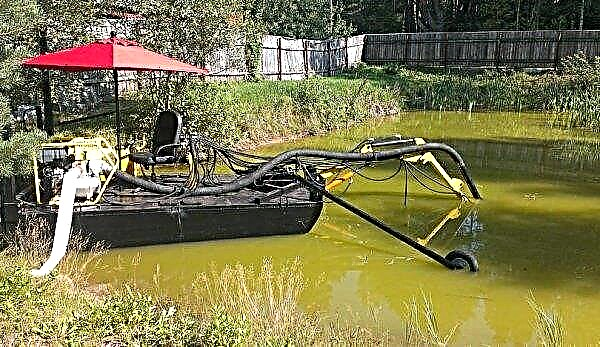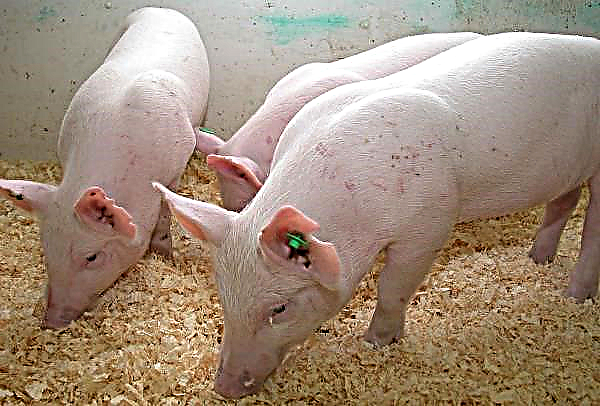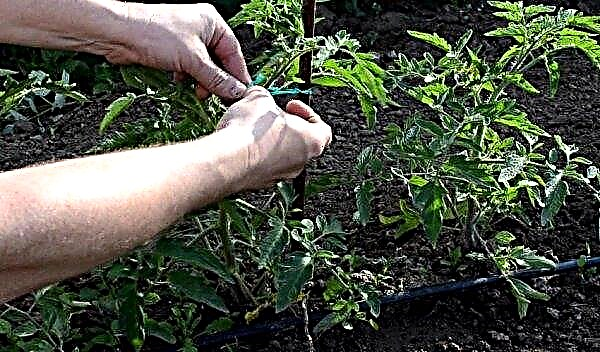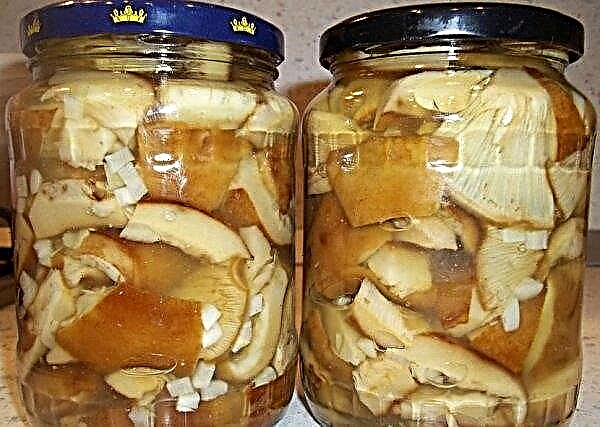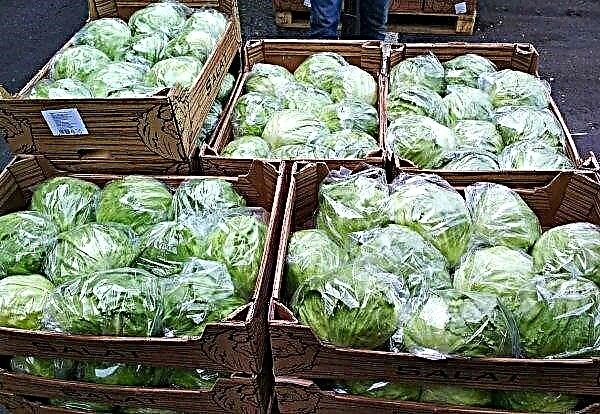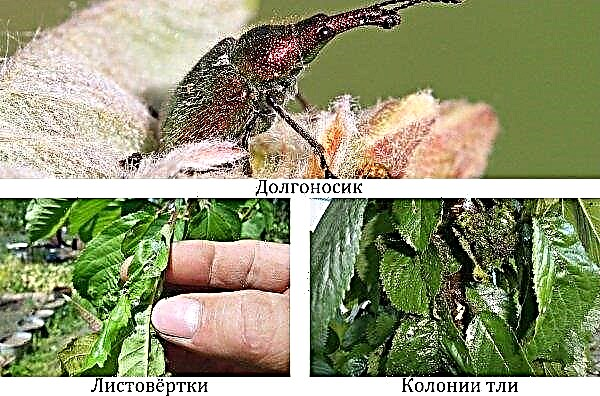Celery in its vitamin and mineral composition is one of the leaders among vegetable crops. The charm of the described spicy plant lies in the fact that it is unpretentious in the care, every summer resident can grow it, observing the simple rules of agricultural technology.
Description and characteristics of celery
Celery is a two-year or perennial herbaceous culture of the Umbrella family, whose homeland is the Mediterranean coast. The plant has a well-developed terrestrial and root system. The green mass of celery is represented by a furrow-branched stalk, on which there are large cirrus-dissected leaves of green color, growing in height up to 1 m. The vegetative period of the vegetable is quite long and is 190-200 days.
For the first year of growth, the plant forms leaves and root crops of a round, slightly flattened shape with elastic flesh. During the second year, a flower stalk is formed on celery in the form of complex umbrella inflorescences, on which small greenish-white flowers are located. Umbrellas contain grains with a specific aroma inherent only to celery.
Flowering culture falls in late June - early July. Seeds in umbrellas ripen in August. The fruits of the plant are large, round-shaped root vegetables weighing 250–800 g (depending on variety), which have a small separation into two parts and are covered with ribs resembling threads.
Did you know? The first mention of celery dates back to BC, when the inhabitants of ancient Rome, Egypt and Greece used the described culture for a variety of purposes: decorative, healing and cult.
The pulp is dense, juicy, elastic. Taste - spicy, slightly bitter, aroma - tart, specific. Root celery is characterized by high resistance to frost. Its seeds are able to grow even at low temperatures, at + 3 ° C, but + 15 ° C is considered the optimal temperature indicator. Plant shoots are not afraid of spring frosts and can withstand temperatures up to -5 ° C.
How to grow root celery on your own
The general agricultural technique of growing celery is simple, but it requires compliance with some nuances.

Sowing time
Cultivation of celery in the country in the open ground involves the preliminary cultivation of seedlings. Since the plant is characterized by a rather long vegetation period, the seed method of planting the crop in the soil in the northern regions is not practiced.
Specialists advise sowing seed material for seedlings, starting from the second half of February, and ending with the first ten days of March, so that the sprouts can grow and grow well before planting them in open soil.Important! In the southern regions, celery can be grown in a seedling-free way by sowing seeds in open soil.
Suitable soil
For sowing celery seeds, it is preferable to choose loose, highly nutritious soil, which can be prepared independently, using:
- peat - 6 parts;
- humus - 2 parts;
- Mullein - 1 part;
- turf land - 1 part.
An alternative can also be a mixture of identical parts of biological humus and river fine sand.
Self-prepared substrate needs mandatory disinfection, which can be carried out using one of the methods described below:
- calcine the soil mixture for 25-30 minutes in the oven, at a temperature of + 180 ° C;
- freeze the soil in the freezer for one day;
- shed the soil with a weak solution of potassium permanganate and dry thoroughly.
Thoroughly prepared soil mixture must be scattered in boxes for growing seedlings and properly moistened.
Seed preparation
Before sowing seed material into the soil, it must be carefully prepared. It should be noted that the seeds of the described vegetable culture are small, saturated with essential oils, which is why they are characterized by reduced growth rates and rapid loss of germination.
To accelerate the growth rate of seedlings, experts recommend:
- for sowing, use only fresh seeds;
- Before applying the seed material, check for quality: pour the seeds with weak saline and let stand for about half an hour - good, high-quality grains will sink to the bottom of the tank, bad ones will remain on the surface of the water;
- to accelerate the production of sprouts, the selected seed material should be poured with warm water at a temperature of + 50 ... + 53 ° C and held for 30 minutes, then soaked for two days in water at room temperature. During this time, the water should be changed to fresh up to five times;
- seeds that swell and germinate, place on a napkin and dry.

Sowing seeds
Sowing celery seeds for seedlings, as noted above, is necessary starting in the second half of February.
The sowing procedure is classical and consists of the following steps:
- substrate is poured into prepared containers;
- holes are made in the soil to a depth of 0.5 cm;
- 2-3 grains are lowered into the recesses;
- crops are covered with a small soil layer of 0.5 cm;
- the container is covered with a plastic film to create a greenhouse effect.
For sowing, a 2x2 scheme is used, that is, the interval between rows and between holes should be approximately 2 cm.

Seedling Care
After sowing future seedlings, it is necessary to provide complete, regular care:
- Temperature and lighting. It is recommended to place the seedling container in a rather warm, shaded place, with stable temperature indices + 18 ... + 22 ° С. After 7-10 days, when the first seedlings appear, the container should be moved to a bright place and the temperature should be + 16 ... + 18 ° С.
- Watering. Given the fragility of the sprouts, it is not recommended to water them. To moisturize, water should be sprayed over the surface of the soil with a spray gun. Irrigation measures should be carried out once a week, while avoiding excessive waterlogging of the soil, as a result of which root rot may occur.
- Top dressing. Before planting seedlings in open ground, it can be fed several times using mineral or organic means, for example, bird droppings, Kemira, complex preparations.
- Dive. When 2-3 full-fledged leaflets are formed on seedlings, it should be planted in separate containers, for which disposable plastic cups are perfect.
Important! When transplanting into other pots, it is necessary to pinch the root root 1/3.
Planting seedlings in the ground
Planting sprouts in open soil should be carried out upon reaching the age of 55-60 days. As a rule, this period falls in mid-May, when dry and warm weather prevails on the street.
Before planting seedlings, it is recommended to carry out a number of preparatory measures:
- loosen the soil to a depth of not less than 30 cm;
- to make fertilizers in the soil: organic means - 1-2 buckets of humus per 1 sq. km. m or complex preparations - 20 g of urea, 9 g of superphosphate and 15 g of potassium chloride per 1 square. m .;
- Spray seedlings with a weak solution of potassium permanganate to prevent the development of ailments and parasites.
A place under celery in the garden is advised by experts to choose a fairly bright, with nutritious, light and loose soil, without the presence of drafts. The best predecessors of the described vegetable are cucumbers, tomatoes, cabbage.

Landing measures are recommended in the morning or evening hours or on a cloudy day when there is no scorching sun.
The landing algorithm is simple:
- Furrows are made in the ground, the distance between which is 55-60 cm.
- In each furrow with an interval of 30 cm, holes are made and seedlings are planted in them.
- Sprouts are sprinkled with soil in such a way that a growth point remains on the surface.
- Seedlings abundantly watered with settled water.
Important! If there is a chance of night frost returning on the street, then it is recommended to cover the plantings at night with plastic wrap.
Outdoor Celery Care
At the first stage of their development, seedlings grow quite slowly and need competent, regular care.

Watering
The culture belongs to the category of moisture-loving and prefers plentiful watering, which must be carried out every 2-3 days. In hot weather, the frequency of moisture should be increased to once a day. Any system can be used for irrigation: drip, under the root, etc. During the whole season, the soil around the plant should always be kept moist.
Important! Uneven moisture can provoke deformation of the fruit and cracking. Excessive watering can lead to the formation of a large number of adnexal root processes located on the upper part of the fruit.
Feeding
In order for the root to be large, healthy, aesthetically attractive, throughout the summer, the culture needs to be fed 4 times. Fertilizing for the first time is recommended to be carried out 2-3 weeks after planting seedlings. You can feed the plant with any complex fertilizer, combining the introduction of drugs with watering.

Two weeks after the first top dressing, experts advise shedding the soil with infusion of chicken manure. A third portion of fertilizers, using a solution of superphosphate, must be introduced in mid-July. The last (fourth) is introduced after the start of root formation using a solution of boric acid.
Weeding and cultivation
In order for the root system to develop well, and the root crop to receive the necessary nutrients and moisture from the soil, it is necessary to regularly cultivate. The first time the soil is loosened a week after planting seedlings, deepening by 6-8 cm.
The second and subsequent loosening procedures are carried out as necessary, before watering the plant, but at least 1 time in two weeks. Soil cultivation experts recommend combining with weeding. Weed removal is best done before the parasite plants begin to bloom.
Important! Root celery is not spud. When the root crop begins to grow, it is advised to slightly expose its upper part.
Diseases and pests of root celery
To protect and prevent celery from diseases and parasites, it is strictly forbidden to use chemicals. Only biological agents are allowed.
In most cases, the culture is affected:
- white and bacterial rot;
- powdery mildew;
- scab;
- leaf spotting.

The main fight against diseases is to comply with the basic rules of agricultural technology:
- timely watering, without allowing excessive waterlogging of the soil;
- avoid spreading weeds;
- preventive spraying of bushes with the use of biological fungicidal preparations, for example, Trichodermin, PhytoDoctor.
Of the insect pests, slugs, snails, larvae of carrot flies, whiteflies and aphids are of particular danger to celery. The most effective in combating parasites are the modern insecticidal preparations Haupsin, Boverin, Fitoverm, which regularly process beds.
Did you know? Celery is actively used in folk medicine as an anti-aging, anti-aging product. The root crop contains unique antioxidants that fight free radicals and protect cells from aging.
A good, and most importantly, safe method of preventing ailments and pests is to plant celery with other plants or vegetables.
When can I harvest and how to store it
Since the culture is characterized by a long ripening period, harvesting is carried out quite late - in October. As a rule, root crops are kept in the ground until the first frost, because they are not afraid of temperatures up to -3 ° C.
Fruit harvesting is recommended in dry, calm weather. Root crops are gently pulled out of the ground by means of a shovel, shake off the soil and dry well. After harvesting, the tops must be removed from the fruit, leaving 2 cm above the head.
They store vegetables in a dry, well-ventilated, cool place at a temperature of 0 ... + 2 ° C and a relative humidity of 80–90%. For long-term storage, it is recommended to store the fruits in boxes filled with sand or sawdust.
Celery has a wonderful, quite specific taste, thanks to which it has found wide application in the field of cooking. Various salads, appetizers, first and second courses are prepared with it. Due to the low calorie content, the vegetable is used in the diet menu. It also has a therapeutic effect, which is why in folk medicine it is indicated for the treatment of gout and rheumatism, cleansing the kidneys, normalizing the digestive system, improving metabolism, and treating diseases of the genitourinary system.
Celery is a tasty and healthy vegetable that can diversify the daily menu and give traditional dishes a completely new rich spicy taste and astringent aroma. Moreover, growing a plant is quite simple, if you follow the basic rules of agricultural technology and devote a little free time to planting.

